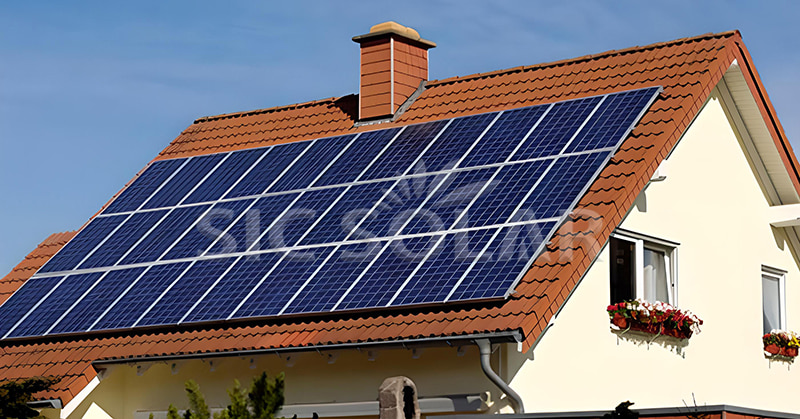When it comes to maximizing the efficiency of your solar energy system, the placement of your solar panels plays a critical role. Solar panels work best when they receive the most sunlight throughout the day, which means that choosing the right location and positioning is essential. Whether you’re installing solar panels for a home, business, or large-scale solar farm, optimizing their placement ensures that you get the most out of your investment in renewable energy.
Key Factors to Consider When Placing Solar Panels
1. Roof Orientation
One of the most important factors in optimizing solar panel efficiency is the orientation of your roof. For the best performance, solar panels should face the true south in the Northern Hemisphere or true north in the Southern Hemisphere. This positioning allows the panels to receive maximum exposure to the sun’s rays throughout the day.
In regions where solar energy production is most effective (such as areas with high sun exposure), facing the panels directly south (or north, depending on your hemisphere) ensures they receive the optimal amount of sunlight.
If your roof does not face south or north, placing the panels at a slight angle can help optimize performance. In these cases, solar mounting systems from companies like SIC Solar can help you adjust the angle and direction of your panels to get the best results.
2. Tilt Angle
The angle at which you tilt your solar panels is another critical factor in their efficiency. The tilt angle determines how much sunlight the panels will absorb and can vary based on geographic location. Generally, the angle should match your latitude for optimal solar energy production, but it can also be adjusted seasonally to accommodate the sun’s changing position in the sky.
- Summer: A lower tilt angle (closer to horizontal) allows solar panels to absorb more direct sunlight during the summer months when the sun is higher in the sky.
- Winter: A higher tilt angle ensures that panels capture the sun’s rays when it is lower in the sky during winter.
While many solar panel installations are set to a fixed angle, adjustable mounting systems from manufacturers like SIC Solar can provide greater flexibility to change the angle according to seasonal needs, boosting overall performance.
3. Roof Pitch
The pitch (or slope) of your roof can also impact solar panel efficiency. A steeper pitch may be beneficial for snow shedding in colder climates, while a flatter roof may require more precise mounting solutions to ensure the panels are tilted at the optimal angle for year-round performance.
SIC Solar offers various racking systems designed for both steep and flat roofs. These systems allow for easy adjustment of the tilt angle and secure placement, ensuring that your panels are mounted at the correct angle regardless of roof slope.
4. Avoiding Shadows
Shadows cast by nearby trees, buildings, or chimneys can significantly reduce the efficiency of your solar panels. Even a small shadow can create a “hotspot,” where parts of the panel are not operating at full capacity. This can lead to a decrease in overall system performance.
When planning your solar panel placement, consider the solar access throughout the day. Opt for a location on your roof or property that is free from obstructions that could cast shadows on your panels during peak sunlight hours. You can use solar shading analysis tools to assess potential shading throughout the year.
If installing on a flat roof or a carport, the layout of the solar panels should be carefully planned to ensure that there is enough space between each panel to avoid self-shadowing. SIC Solar‘s advanced mounting solutions can also be used to position panels in ways that avoid shading issues.
5. Roof Material and Structural Integrity
The material of your roof and its structural integrity can affect how easily and securely you can install solar panels. Some roofing materials, like asphalt shingles or metal, are well-suited for solar panel installations. Others, such as tile roofs, may require additional mounting equipment or care to ensure that panels are securely fixed without damaging the roofing material.
For any roofing type, SIC Solar offers mounting brackets and hardware that are specifically designed for compatibility with various materials. These components ensure that the panels are securely attached to the roof, maintaining both the integrity of the roof and the solar panel system.
6. Space for Panel Array
The amount of space available for the solar panel array on your roof will also determine the number of panels you can install and their efficiency. In general, you should allow for enough space between the panels to ensure proper airflow and prevent overheating. Proper spacing also allows for easy maintenance and cleaning.
If space is limited, a vertical installation or a solar balcony system can help save space while still providing efficient solar energy generation. In the case of flat roofs, ballast mounting systems from SIC Solar can be used to securely place panels without drilling, minimizing the impact on the roof structure.

How SIC Solar Helps Optimize Solar Panel Placement
At SIC Solar, we specialize in providing high-quality solar mounting systems and racking solutions that ensure efficient panel placement and security. Whether you are mounting panels on a flat roof, sloped roof, or ground-mounted system, our products are designed for ease of installation, durability, and optimal solar panel orientation.
Our solutions are engineered to:
- Ensure correct tilt angles and solar panel orientation for maximum efficiency.
- Minimize shadowing issues by offering flexible mounting options.
- Provide secure ballast and ground screw solutions for flat roofs, reducing installation time and complexity.
- Offer high-quality roof hooks and brackets that are compatible with a wide range of roof types, ensuring stability and performance.